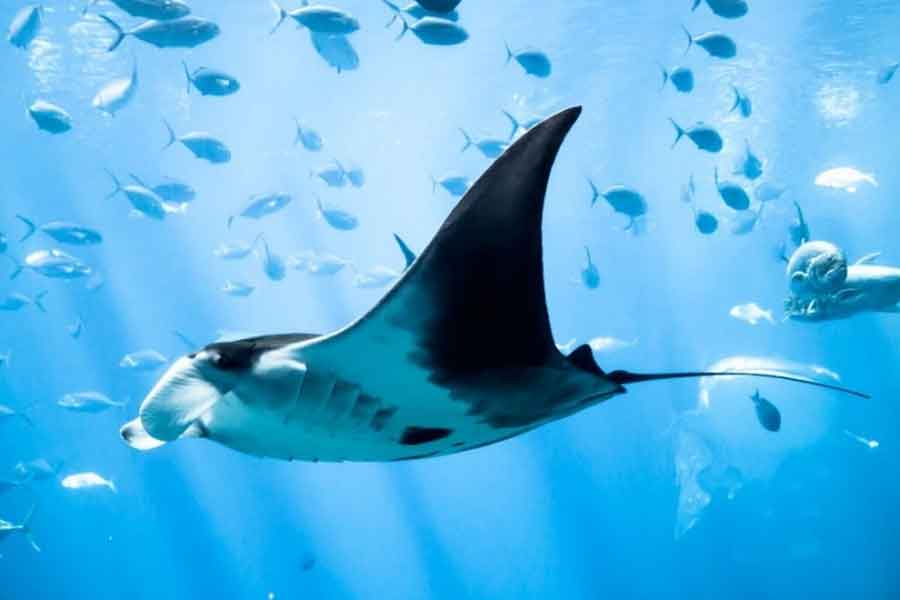
Stingrays are animals that have adapted their lives to sandy bottoms near the coast. They often stay buried in the sand to hide from predator attacks, but even so, they remain quite exposed. That’s why this ingenious animal has developed a defense mechanism consisting of a venomous stinger located in the first third of its tail.
Only two families of rays possess this stinger, which has an extremely sharp tip with serrated edges and has been described as «a stiletto placed on a whip.» The stinger is replaced by another one periodically, which explains why some rays have two or three stingers. The venom is produced by a glandular tissue located in two parallel grooves behind the stinger, which is usually proportional to the size of the ray. In the Australian stingray, which can measure up to two meters from wingtip to wingtip and weigh 340 kilograms, the stinger reaches a length of 30 cm.
The most curious fact is that stingrays are viviparous, and the offspring are already born with a stinger and venom. But how do they prevent the newborns from stabbing the stinger into their mother’s oviduct? Nature has provided these animals with a peculiar solution. At birth, the stinger of the offspring has the consistency and flexibility of paper, so it cannot pierce and hardens upon contact with water.
Contrary to popular belief, the stinger is a defensive weapon that the animal only uses when it feels threatened. In the case of humans, the venom is not lethal, and all cases of injuries have occurred in fishermen who caught a stingray or in careless swimmers who stepped on one while entering the sea. When in contact with divers, they tend to be quite sociable and curious. Once they «take flight,» it is possible to stroke them or feed them. When a diver brings them food, they usually gather around, trying to get the best portion.
The use of the stingray’s stinger as an arrowhead or spear was widespread among coastal tribes in ancient times, and it is already mentioned in Greek mythology as an extremely dangerous weapon. There is a tendency to confuse Manta Rays with large stingrays, when in reality, they are two distinct species with notable physical differences.
«You cannot defend what you do not love, and you cannot love what you do not know.»

